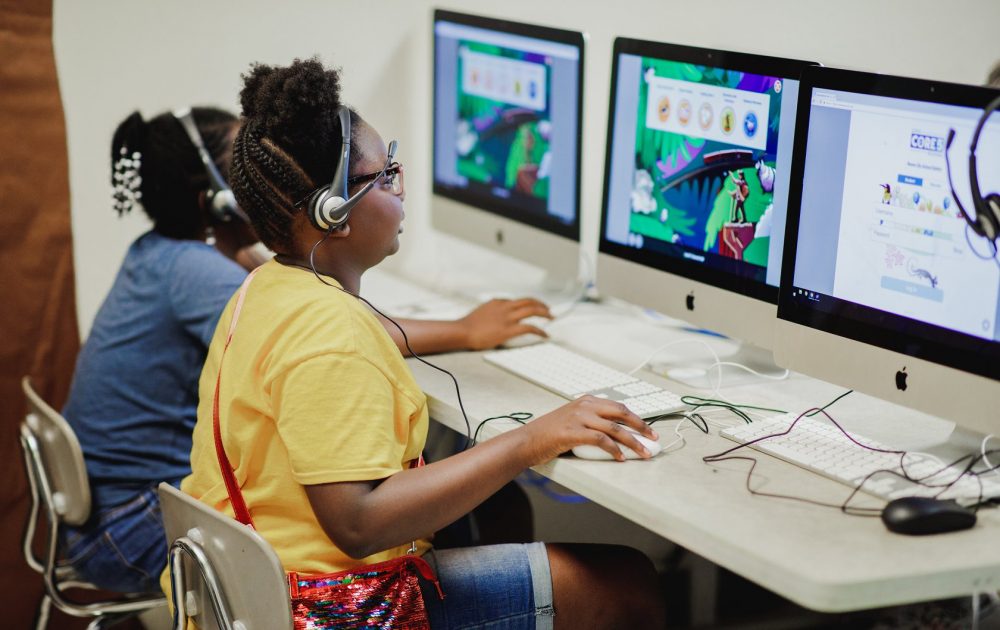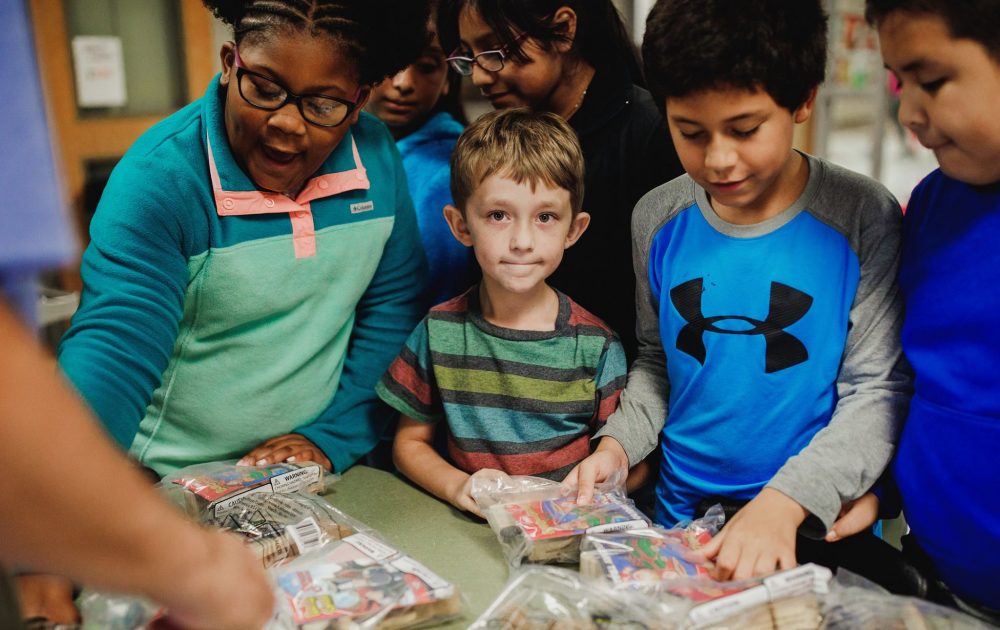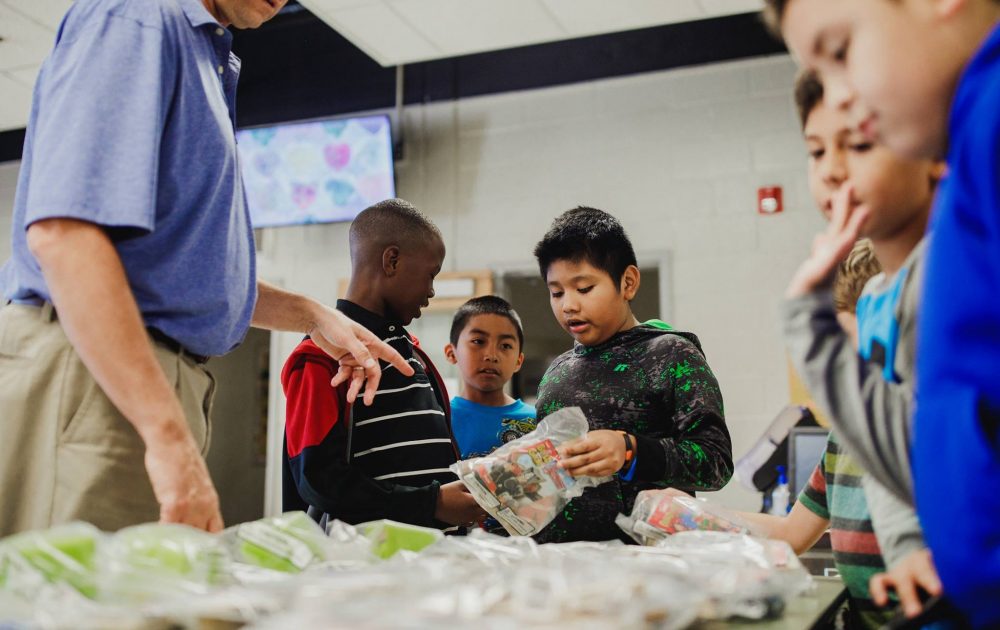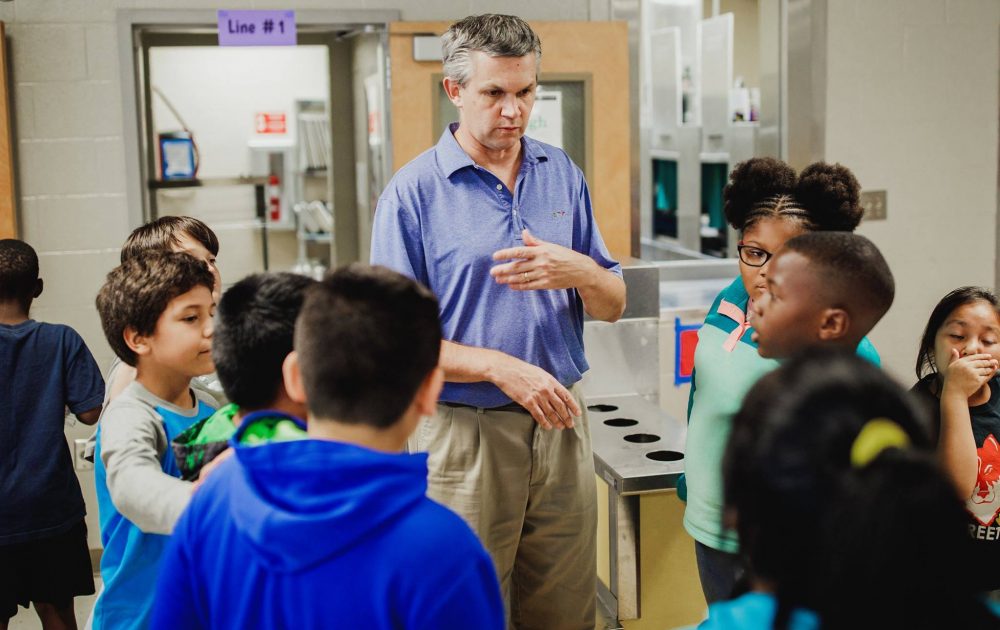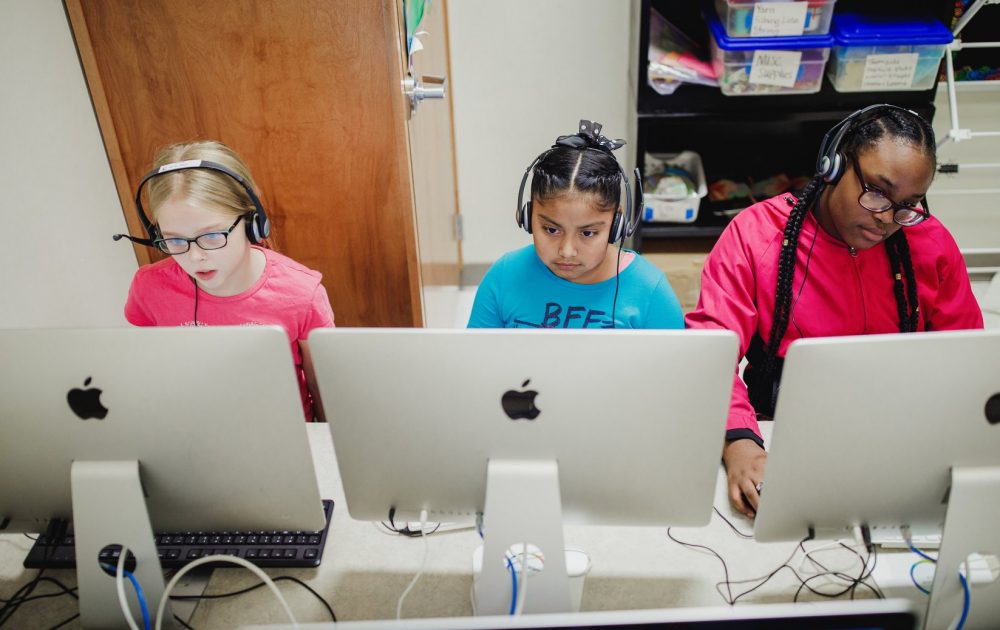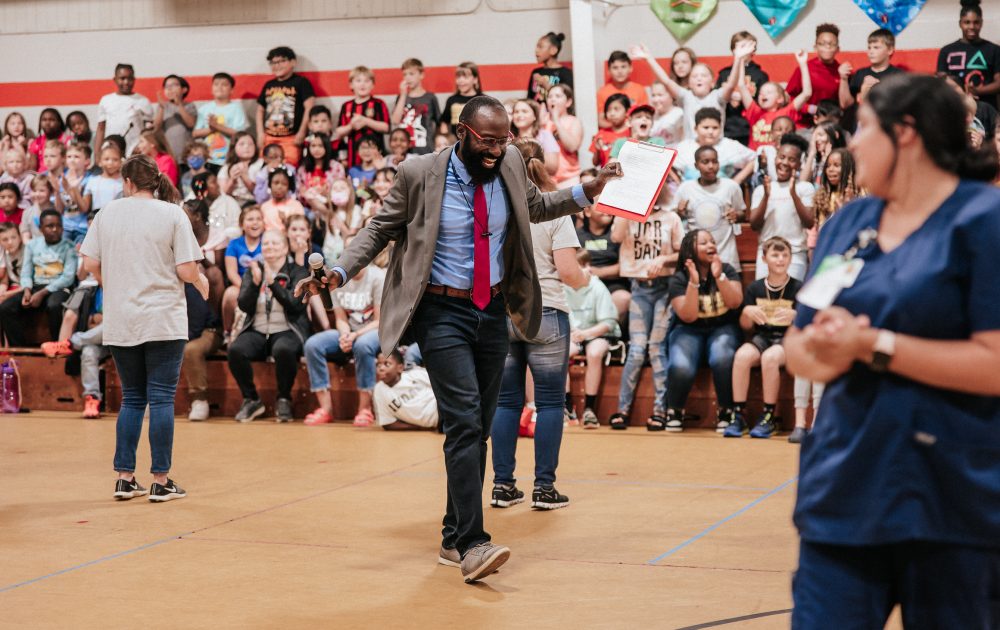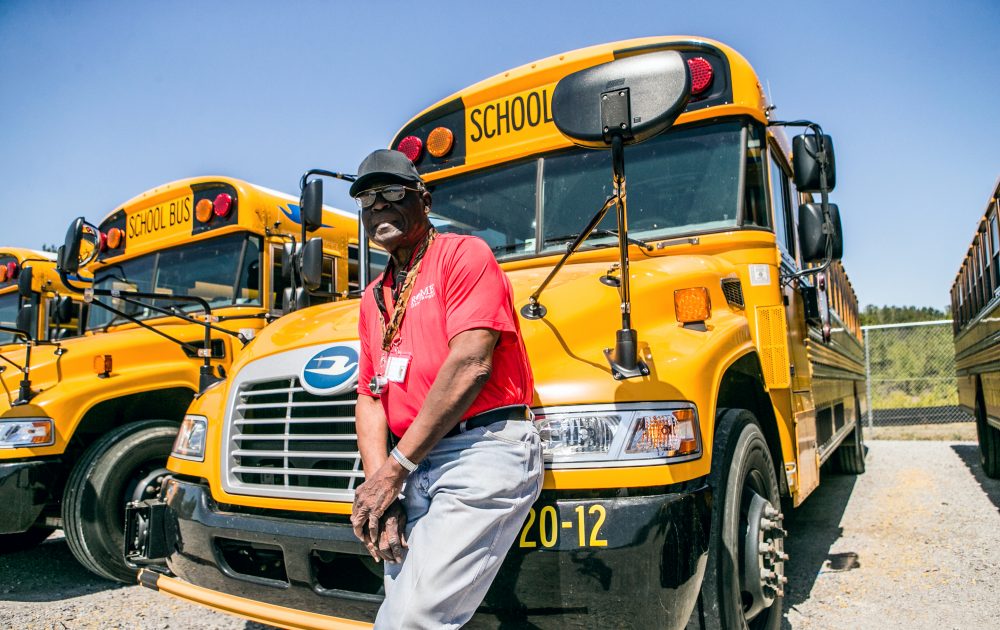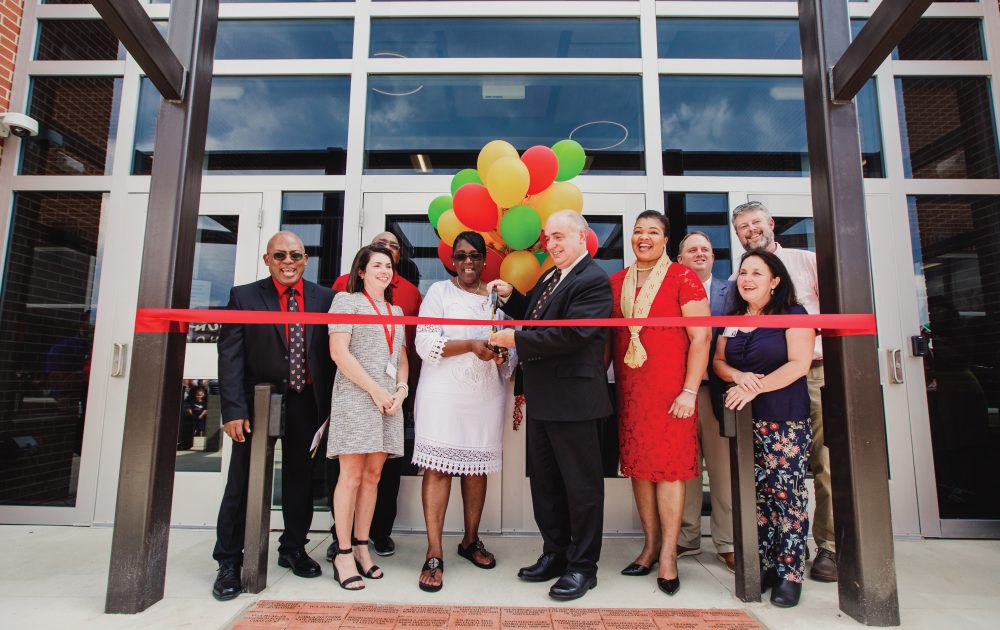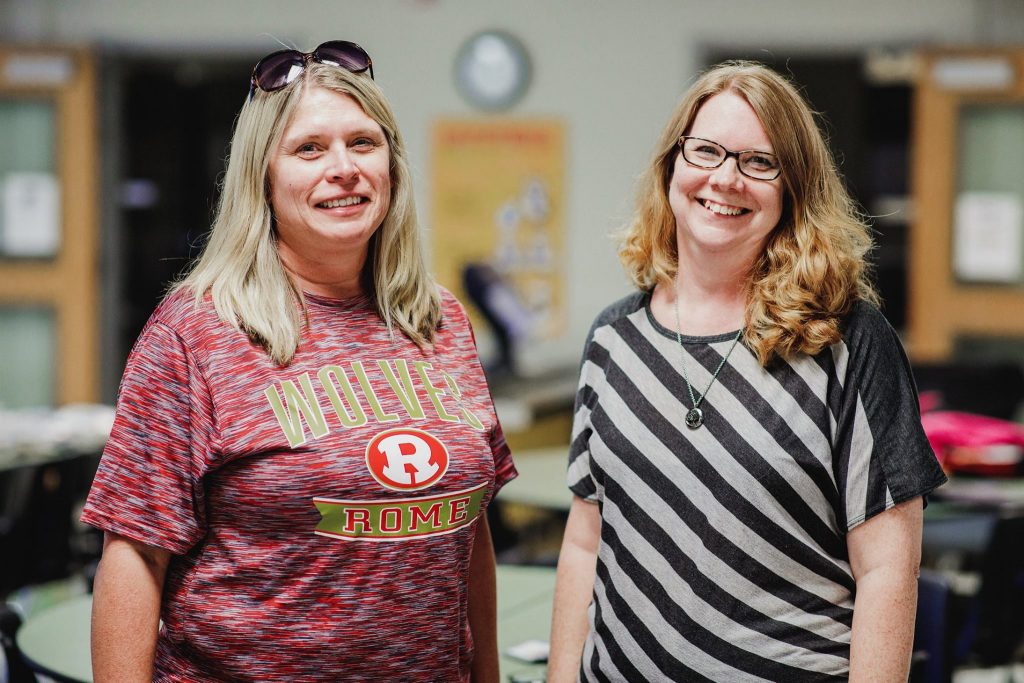
Photos by Rome City Schools
Making the best use of time is a valuable lesson to learn early on. Elm Street Elementary’s ASPIRE after school program, implemented last year, has taken very little time to fill up, and some parents have placed their children on a waiting list because the program is now at capacity with 44 students. By offering much more than help with homework, ASPIRE educators aim to not only make the children better students, but better people, too.
Penny Akinson is a Physical Education teacher at Elm Street but she also serves as the co-coordinator for ASPIRE. She and Pre-K teacher, Heather Sargent, have organized activities to keep students busy during down time after school, but also give them a helping hand with their studies. The program runs from 3-6 p.m., and the children are given a snack after school. They are also fed dinner before they leave, all free of charge through the 21st Century Community Learning Centers Program grant.
“We have students here four days a week and we work on reading, math and writing,” said Akinson, “but we also have fun extracurricular activities for our students. On Monday, we have 30 minutes of dance and woodworking. On Tuesdays we have an art class after working on our studies. On Wednesdays we all go to the YMCA where half of us swim and the other half participates in a fitness class like Zumba. Then, on Thursdays we have a life skills group that we teach in addition to our reading, writing and math.”
During the life skills class, the students learn manners, safety lessons and other basic skills.
ASPIRE is a federally funded program that is planned for the five years starting with the 2017-2018 school year. The program consists of third, fourth and fifth grade students. While the goal is to have fun with learning, some of the data collected has been instrumental in getting students reading on grade level.
“We use a reading program called Lexia. This program presents the learning activities in a fun and engaging way, and our students really enjoy working on the lessons,” Akinson explained. “But, the data we collect after
they work through different sections is how we track their levels. I can access the progress of each student to be sure they are working and help them in areas where they may be deficient.”
The data is then shared with the teachers around the school so that they can tailor their lessons to the needs of the students. Also, by tracking progress students are able to be rewarded for reaching milestones in their education.
“For example, if we work on fractions during ASPIRE and we see that some of our students are struggling, then we can pass the information on to teachers who can then spend extra time in that area of study,” Akinson said.
The curriculum is provided by the federal government, but educators can choose the direction of the lessons according to each student’s needs.
In addition to the weekly activities, teachers will also take the students out to restaurants to practice their manners and Seo’s Martial Arts also offers classes to students during their time in ASPIRE.
“Our students and our parents are very excited about the ASPIRE program here at Elm Street, said Principal for Elm Street, Laura Walley. “Not only are they getting help in core academic programs, but they are also exposed to these unique opportunities. Having the chance to participate in some things we don’t normally offer during the school day is wonderful for our children, so it is a win educationally and they have fun as a reward for all of their hard work.”
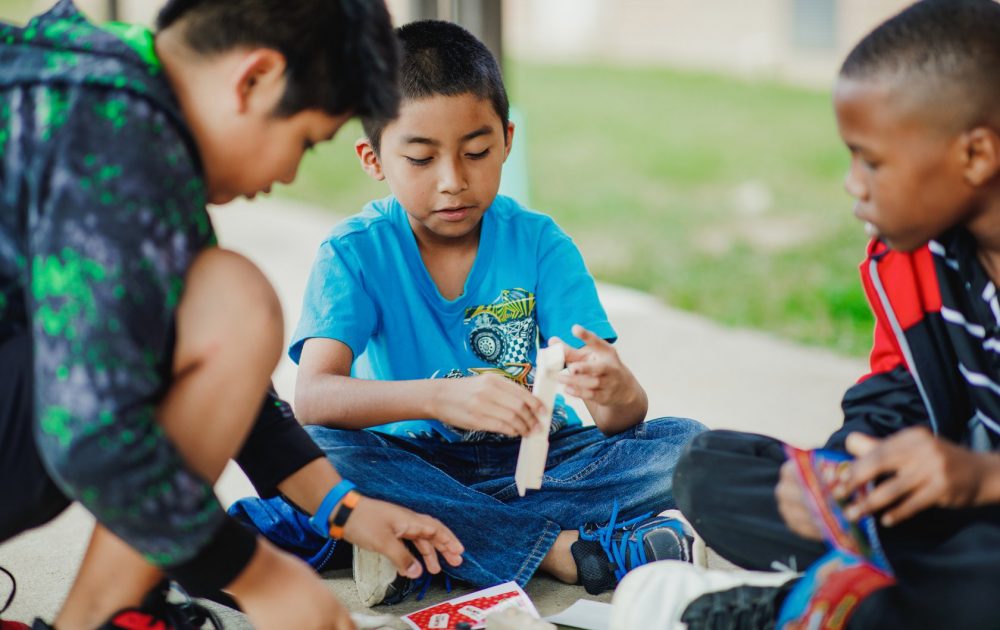
Tonya Wood, Grant Coordinator for Rome City Schools, said that the opportunities outside of standard class time lessons help to make the ASPIRE program impactful to Rome City Schools’ students.
“The physical education, art education and social skills elements provided by ASPIRE are really what make the program attractive to parents, students and teachers. It is always helpful to a school system to have grants available that allow us to teach things that make our students better performers inside and outside of the classroom,” Wood said. “We’ve had really great feedback from our community about the program and we are happy to provide this for students who would otherwise not get the extra one-on-one time after school.”

